Project Year
2009
Region(s)
Latin America and the Caribbean
Country(ies)
Mexico
Project Description
The proposal aims to analyze the various types of financial practices that are commonly carried out between indigenous artisans from the region of Los Altos de Chiapas to identify the social mechanisms that come into play and determine the frameworks of calculation by which value is attributed to natural resources and trade. The particularity of the cases to be analyzed is that women are concerned that a high percentage have not attended school and do not know the basic operations of arithmetic, yet they make significant contributions to the economy of their families through the production and marketing crafts (and other goods). For this resort to some practices such as cooperation with other artisans to join to purchase inputs in bulk and lower costs, or organized group to market its products, which are unlikely to demand due to market saturation.
Researcher(s)
Maria Eugenia Santana, Magdalena Villareal
About the Researcher(s)

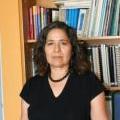
Synopsis of Research Results
Uncertainty sets the tempo within which many people manage their economy in the highlands
of Chiapas. Unpredictable climate, unreliable government policies and uncertain markets
make planning ahead difficult. Their day to day calculations take into account the
consideration that they might not have access to critical resources in the immediate
future. In studying indigenous families'  financial practices in two towns –Amatenango and Zinacantán— in the Chiapas highlands,
we encountered a complex intertwining of economies, some drawing heavily on tradition,
others aiming at “development”, but most, pursuing mixed strategies in their struggle
to get by. The region is classified, according to official statistics, as one of the
poorest of the state, which in turn is one of the poorest of the country. During our
fieldwork, we made an extra effort to tease out monetary and non-monetary calculations
from conversations and the observation of everyday life transactions. People were
quite open in providing us numbers concerning costs and prices, but these did not
always add up in a way that made sense to us. Frequently it was the time dimension
of their calculations that we had to understand, but most often we had to come to
grips with the social and cultural framework within which these were construed. Here,
like in many other settings all over the world, arithmetic is signified in the light
of beliefs, fears and hopes.
financial practices in two towns –Amatenango and Zinacantán— in the Chiapas highlands,
we encountered a complex intertwining of economies, some drawing heavily on tradition,
others aiming at “development”, but most, pursuing mixed strategies in their struggle
to get by. The region is classified, according to official statistics, as one of the
poorest of the state, which in turn is one of the poorest of the country. During our
fieldwork, we made an extra effort to tease out monetary and non-monetary calculations
from conversations and the observation of everyday life transactions. People were
quite open in providing us numbers concerning costs and prices, but these did not
always add up in a way that made sense to us. Frequently it was the time dimension
of their calculations that we had to understand, but most often we had to come to
grips with the social and cultural framework within which these were construed. Here,
like in many other settings all over the world, arithmetic is signified in the light
of beliefs, fears and hopes.
Trust in God and the saints
First and foremost in their calculations is their trust in God and the saints. Placing hopes and fears in the hands of God and the intermediation of ancestors is a way of dealing with uncertainties. Religious celebrations and rituals are thus an important part of everyday life. Flowers and candles are constantly brought to the saints in search of support for a particular problem or as a way of “credit”, to be in good terms with the saints or the virgin in case a problem should arise. One woman explained that “they are the ones that take care of us”.
The eldest woman in the family is proud to be able to present an altar with expensive
flowers to the baby Jesus, here as the child doctor.
Altars like this can be seen in many houses. Saints bring good fortune and also protect the households from harm, including that which may be caused by envy. But saints must be made happy through the generosity manifested in rituals, providing ample supplies of fireworks, candles, flowers, spirits (called pox) and food.
The saints and the church must be attended to all year round. Mayordomos, appointed by the assembly, make sure the place is clean and richly decorated with fresh flowers, particularly for celebrations. Their work is also appreciated because they take charge of the patron-saint fiesta. These cargos are a way of thanking God and the saints, who will thus look upon the community with kind eyes. The community will be protected. In this prestige economy, mayordomos gain stature.
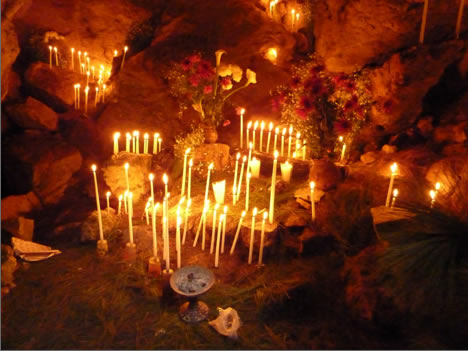
Calculations in “God’s time”
Locals speak of God’s time to differentiate it from daylight saving time, which they say is a government imposition and thus do not abide by it. God’s time is that of their ancestors. It is the time that guides their activities throughout the day, their schedules for planting the milpa. The “milpa” is a traditional family system of cultivation that was practiced in Mesoamerica in pre-colombian times. Maize is cultivated together with beans and/or squash, chile and other vegetables according to local practices. It is a biodiverse system wherein the use of inanimate energy per unit of cultivated land is minuscule. Producers leave the terrain fallow at least a few months after harvesting, some even cultivating every other year to let the ground rest.
Calculations involved in the milpa system tend to be formulated on a yearly basis. While men are busy cultivating the land, women produce pots, textiles and other craftwork to sell. This provides for salt, soap, coffee, sugar and other necessities. Home gardens where fruit, vegetables and herbs are grown and chickens, turkeys and sometimes rabbits raised are important to their economy.
“The man”, says Doña Mari, “he gives money for the meat, but only if he works in the
milpa is the money shared”. She sits in her rudimentary kitchen –wood beam soaked
with soot from years of an oak burning— warming the tortillas and toasting coffee.
An iron bent in several directions holds pans and coffee pots. This coffee is from
the two trees behind her house.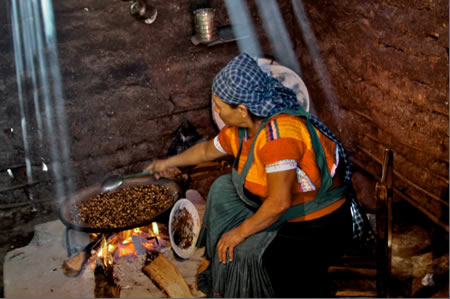
When she´s having a good day (and her hands do not hurt too much from arthritis), she says, she´ll work the clay: “When you´re young you work the clay making simple dishes and flower pots. You would sell them to pay the expenses. Back then everyone used pottery, not plastic.” Now too, she says, they cover the expenses for her kitchen. The responsibility is to buy the soap, the salt, sugar, and chili.
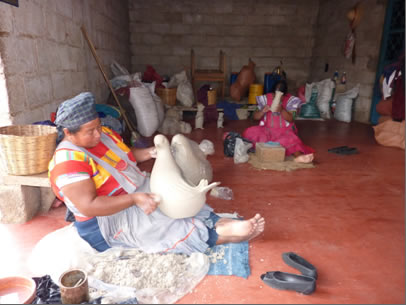 Cash and Craftwork
Cash and Craftwork
In Amatenango del Valle, Tzeltal male inhabitants work in agriculture—mainly maize cultivation— while the women mostly occupy themselves doing craftwork, from which they receive monetary income. Craftwork is very labor-intensive. Using ancient techniques that were inherited by the Mayas, women fabricate pots, doves, jaguars and other figures by hand, without the use of molds. An experienced craftswoman might be able to shape 3 to 4 doves like this a day, but behind this work are days of digging, drying and mixing clay, buying or chopping firewood, burning, polishing and painting the work. For each piece they receive about 4 or 5 USD maximum.
Each woman needs as many as 40 sacks of clay to produce pottery for a whole year.
The clay and the sand are available for free from communal land near the town, but
the clay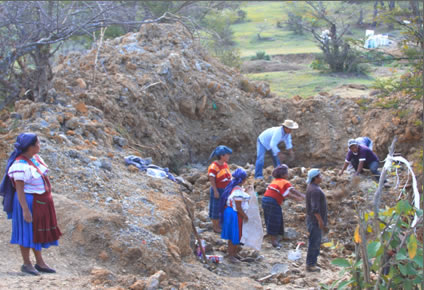 must be dug up before the rainy season, when the area gets soggy. All the family
helps, but men do most of the excavating and load the truck. Upon their return with
the sacks of clay, they are received with happy applauses. Women show their appreciation
by cooking a special meal and offering them drinks. Making pots and other colorful
items is women’s work. To fire the clay pots, instead of a kiln, they place the pots
on top of slats of firewood in an open-air furnace. Women are also in charge of the
commercialization. This allows them some control over household expenses.
must be dug up before the rainy season, when the area gets soggy. All the family
helps, but men do most of the excavating and load the truck. Upon their return with
the sacks of clay, they are received with happy applauses. Women show their appreciation
by cooking a special meal and offering them drinks. Making pots and other colorful
items is women’s work. To fire the clay pots, instead of a kiln, they place the pots
on top of slats of firewood in an open-air furnace. Women are also in charge of the
commercialization. This allows them some control over household expenses.
Prestige and dignity: social currencies
In each indigenous town, women use specific colors and designs for their clothes.
This is how they identify themselves as different from the inhabitants of other towns.
Showing off new dresses, traditional style, during the fiesta is important for women’s
dignity and prestige. Fiestas are an occasion to show status.
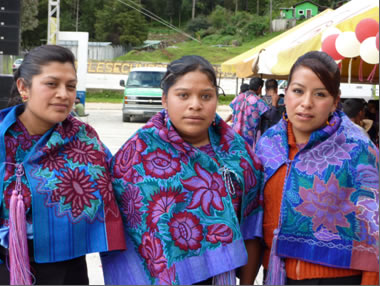 Although outsiders might not immediately notice the difference, in Zinacantán, colors
and embroidery details in the textile used for skirt, blouse and cape are constantly
changing. The whole outfit can cost between 100 and 300 USD. Women weave the textiles
themselves, although they sometimes resort to other—poorer—women from a nearby town
to do the embroidery or to fabricate the whole dress while they continue doing work
for the tourist market.
Although outsiders might not immediately notice the difference, in Zinacantán, colors
and embroidery details in the textile used for skirt, blouse and cape are constantly
changing. The whole outfit can cost between 100 and 300 USD. Women weave the textiles
themselves, although they sometimes resort to other—poorer—women from a nearby town
to do the embroidery or to fabricate the whole dress while they continue doing work
for the tourist market.
In Zinacantán, Tzotzil women weave with waist looms, using ancient techniques based on knowledge passed down from mothers to daughters for hundreds of years. The sale of textiles represents an important income for their families.
In Amatenango the traditional outfit —a heavily embroidered yellow and red blouse
with dark-blue skirt— has not changed a great deal. Here trends change less rapidly
than in 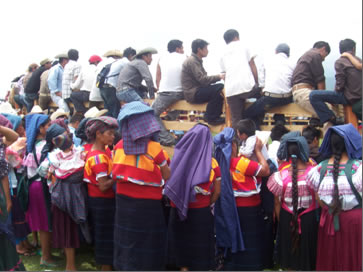 Zinacantán. However, younger women prefer to wear the neighboring villagers’ garb
if they can afford it, since these have more colors and frills and they like the pleated
skirt. (Pictured to the right: the town gathers for a rodeo and women peek between
the boards for a view.) Women are thus proud of their dresses, particularly in Zinacantán,
where their attire is considered the most elegant outfit in the region. Prestige and
dignity are vital to economic calculations in this region.
Zinacantán. However, younger women prefer to wear the neighboring villagers’ garb
if they can afford it, since these have more colors and frills and they like the pleated
skirt. (Pictured to the right: the town gathers for a rodeo and women peek between
the boards for a view.) Women are thus proud of their dresses, particularly in Zinacantán,
where their attire is considered the most elegant outfit in the region. Prestige and
dignity are vital to economic calculations in this region.
Indigenous clothing is also very valuable for tourists, who seek the beauty and authenticity of ancient cultures. They come into the villages to buy textiles and feel the experience of indigenous cultures. But the jan us face of such identification is poverty. Indigenous people tend to be considered all the more “authentic” if they are poor. Charity organizations and government programs provide aid that has now become an important part of household economy.
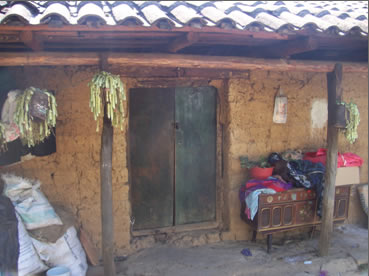 Sadly, showing poverty has also become a social currency.
Sadly, showing poverty has also become a social currency.
View their working paper: About Calculations and Social Currencies: Indigenous Households' Financial Practices in the Highlands of Chiapas
View their blog: Indigenous Families' Financial Practices in the Highlands of Chiapas



